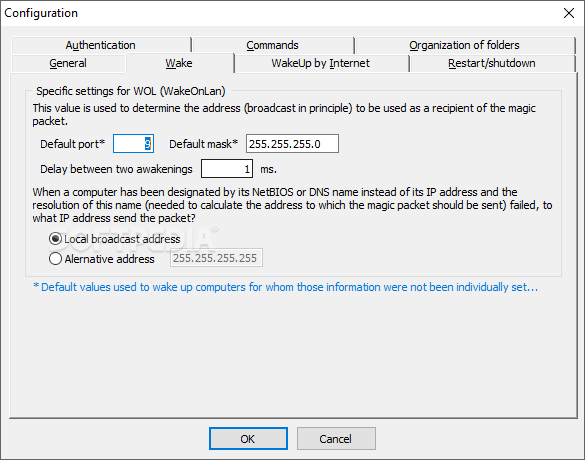
#Wakeonlan centos install
TYPE=EThernet ONBOOT=yes ETHTOOL_OPTS="wol g"įrom the computer that will be used to send the magic WOL packet, install and run wakelan:

# vim /etc/sysconfig/network-scripts/ifcfg-eth0.#echo '/usr/sbin/ethtool -s eth0 wol g' > /etc/rc.d/rc.local.There are 2 methods to achieve this, one employs adding ethtool -s eth0 wol g command to /etc/rc.d/rc.local while the other consists in creating a network script and enabling the network service.Ĭhoose one of the methods, personally I'd go for the /etc/rc.d/rc.local method as it requires less typing ) To have WOL always enabled the operating system needs to be told that eth0 (this is my NIC's interface name, don't forget to change according to your own system) WOL is supposed to be active. Issuing ethtool again now returns " Wake-on: g" so now we have WOL enabled: To command the operating system to enable WOL for the eth0 network interface run: # ifconfig | grep HWaddr eth0 Link encap:Ethernet HWaddr 00:11:AA:22:BB:22.
#Wakeonlan centos mac
To use Wake-on-LAN we need to identify the NIC MAC address to which end ifconfig can be used: The " Supports Wake-on: g" string means that the NIC does in fact support Wake-on-LAN while " Wake-on: d" is a sign that the feature is not turned activated in the operating system.ĭo notice that the target of ethtool was eth0 which is my destination computer's network interface name. Supported link modes: 10baseT/Half 10baseT/FullĪdvertised link modes: 10baseT/Half 10baseT/Full TX packets:8 errors:0 dropped:0 overruns:0 carrier:0 RX packets:8 errors:0 dropped:0 overruns:0 frame:0 TX packets:317604 errors:0 dropped:0 overruns:0 carrier:0 RX packets:563668 errors:0 dropped:0 overruns:0 frame:0 UP BROADCAST RUNNING MULTICAST MTU:1500 Metric:1 Start by checking if the destination computer network card support Wake-on-LAN with ethtool:Įth0 Link encap:Ethernet HWaddr 00:11:AA:22:BB:22 Typical options: "Enable Wake-on-LAN", "Enable Wake on PCI" and "Enable Power of PCIE Devices". There are literally hundreds of BIOS around but look for the Wake-on-LAN, however more often than not you'll need to enable it in theīIOS. These days pretty much all integrated or otherwise NICs support

This procedure is also applicable to RHEL and its clones such as Scientific Linux and Oracle Unbreakable Linux.įor sake of simplicity I've broken down the procedure into a few steps:ĥ) Wake up the computer from local network

#Wakeonlan centos how to
In this post I'll describe how to setup a CentOS destination computer so that it can be turned on from another computer. Network interface card that support WOL then the system wakes up. This magic packet contains the MACĪddress of the destination computer. Is connected to a network (local or not) by means of a special network Wake-on-LAN also know as WOL is the ability to switch on a computer that


 0 kommentar(er)
0 kommentar(er)
